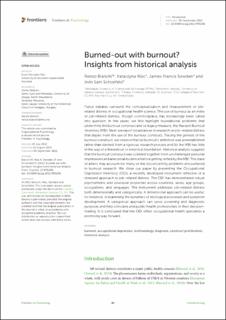| dc.description.abstract | Fierce debates surround the conceptualization and measurement of job-related distress in occupational health science. The use of burnout as an index of job-related distress, though commonplace, has increasingly been called into question. In this paper, we first highlight foundational problems that undermine the burnout construct and its legacy measure, the Maslach Burnout Inventory (MBI). Next, we report on advances in research on job-related distress that depart from the use of the burnout construct. Tracing the genesis of the burnout construct, we observe that (a) burnout’s definition was preestablished rather than derived from a rigorous research process and (b) the MBI has little in the way of a theoretical or empirical foundation. Historical analysis suggests that the burnout construct was cobbled together from unchallenged personal impressions and anecdotal evidence before getting reified by the MBI. This state of affairs may account for many of the disconcerting problems encountered in burnout research. We close our paper by presenting the Occupational Depression Inventory (ODI), a recently developed instrument reflective of a renewed approach to job-related distress. The ODI has demonstrated robust psychometric and structural properties across countries, sexes, age groups, occupations, and languages. The instrument addresses job-related distress both dimensionally and categorically. A dimensional approach can be useful, for instance, in examining the dynamics of etiological processes and symptom development. A categorical approach can serve screening and diagnostic purposes and help clinicians and public health professionals in their decision-making. It is concluded that the ODI offers occupational health specialists a promising way forward. | en_US |

